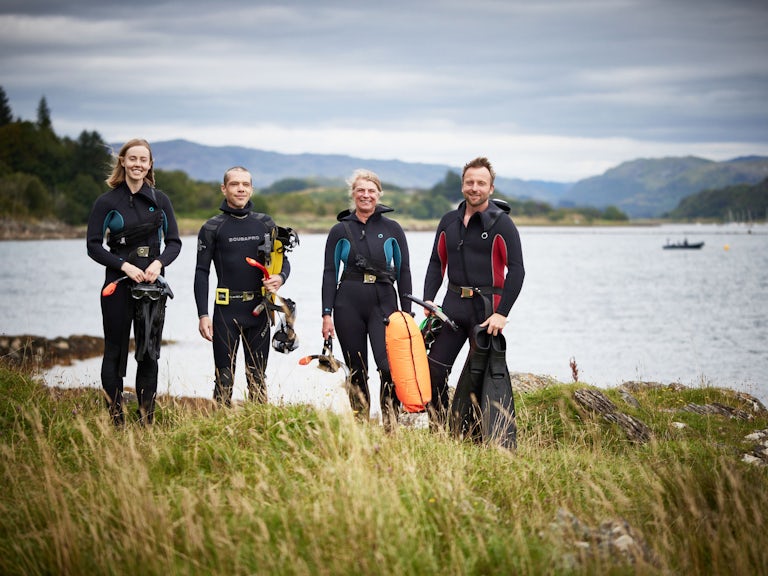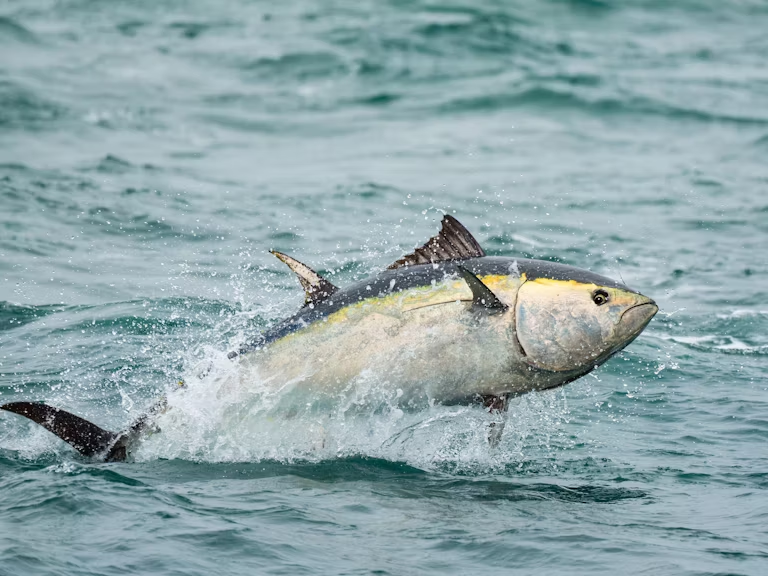Atlantic salmon
Salmo salar
An iconic migratory fish with a unique life cycle, threatened by climate change and habitat loss.
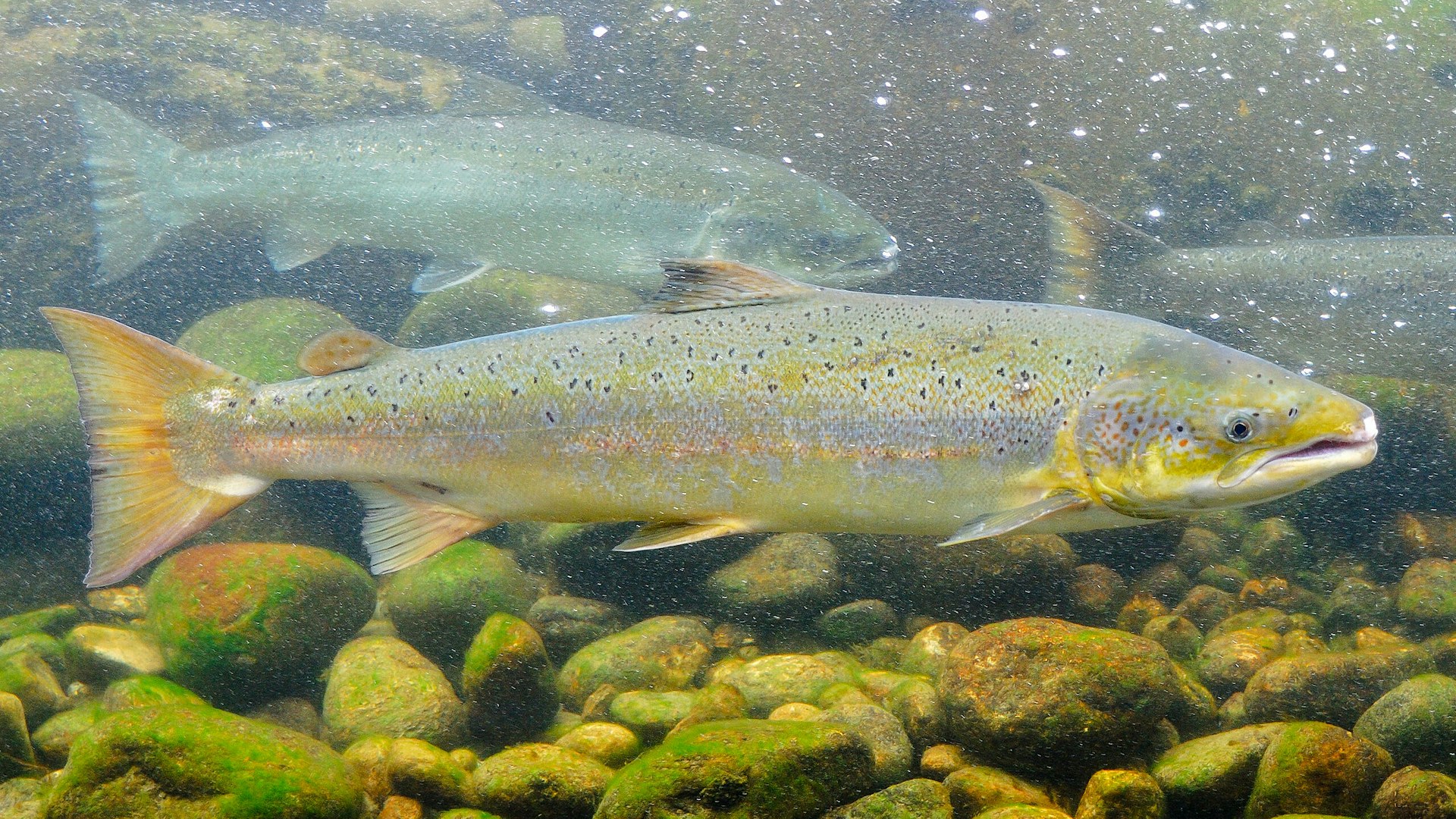
How it shapes its environment
Atlantic salmon are remarkable, anadromous fish – they spend most of their lives in the ocean before returning to freshwater to breed and lay their eggs [1]. As both predator and prey, they are vital in maintaining the balance of freshwater and marine ecosystems. Their epic migrations between ocean and river systems help circulate nutrients, enriching the freshwater habitats where they spawn.
Salmon are indispensable to biodiversity, supporting species like otters and birds of prey that depend on them as a food source. Moreover, wild salmon are ecological indicators of healthy aquatic ecosystems, signalling the vitality of the habitats they inhabit [2].
Young salmon primarily feed on small insects. In the ocean, both young and adult salmon eat a variety of prey, including fish, crustaceans, cephalopods and polychaete worms [3]. When they return to the waters of their birth for spawning, adult salmon stop eating.
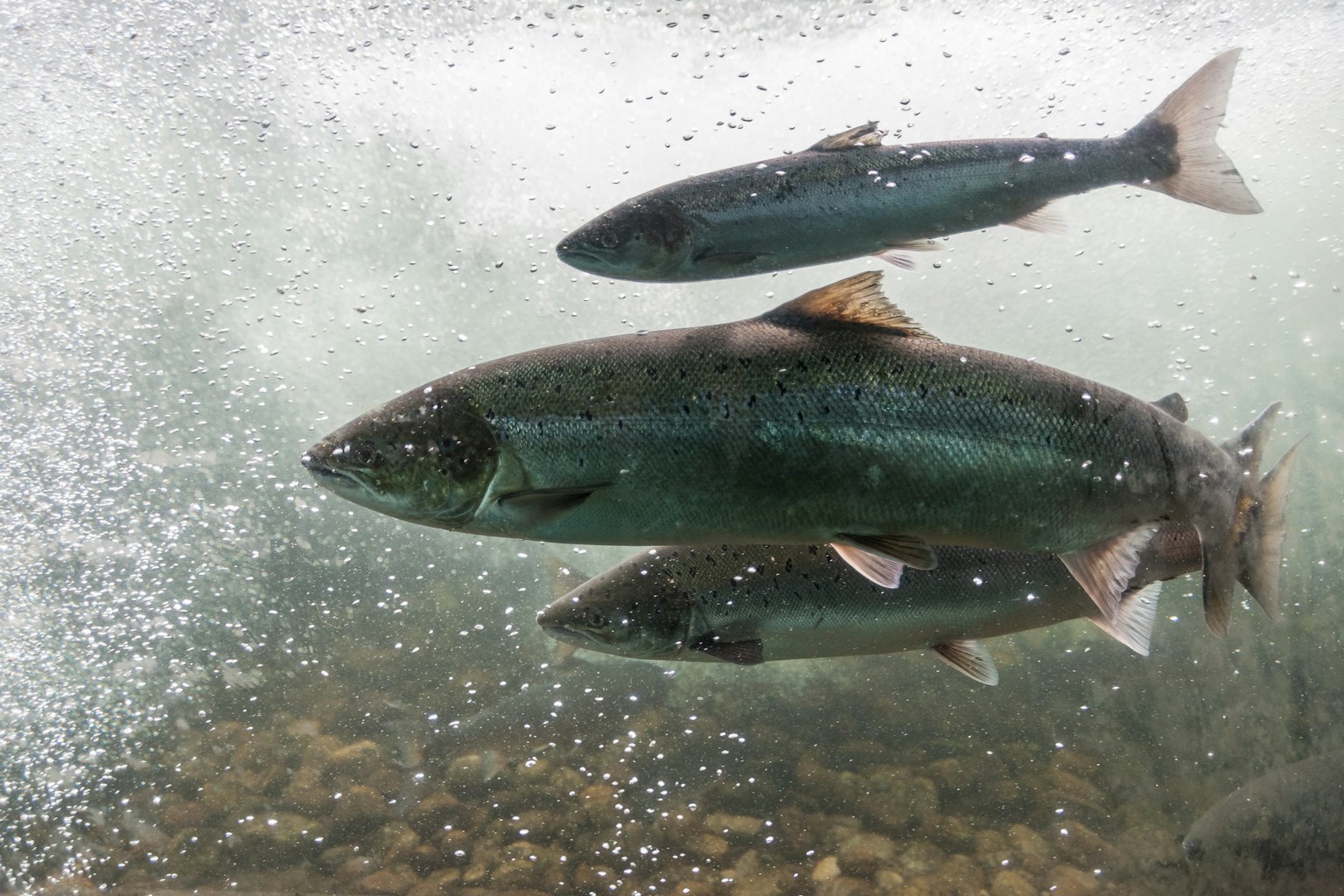
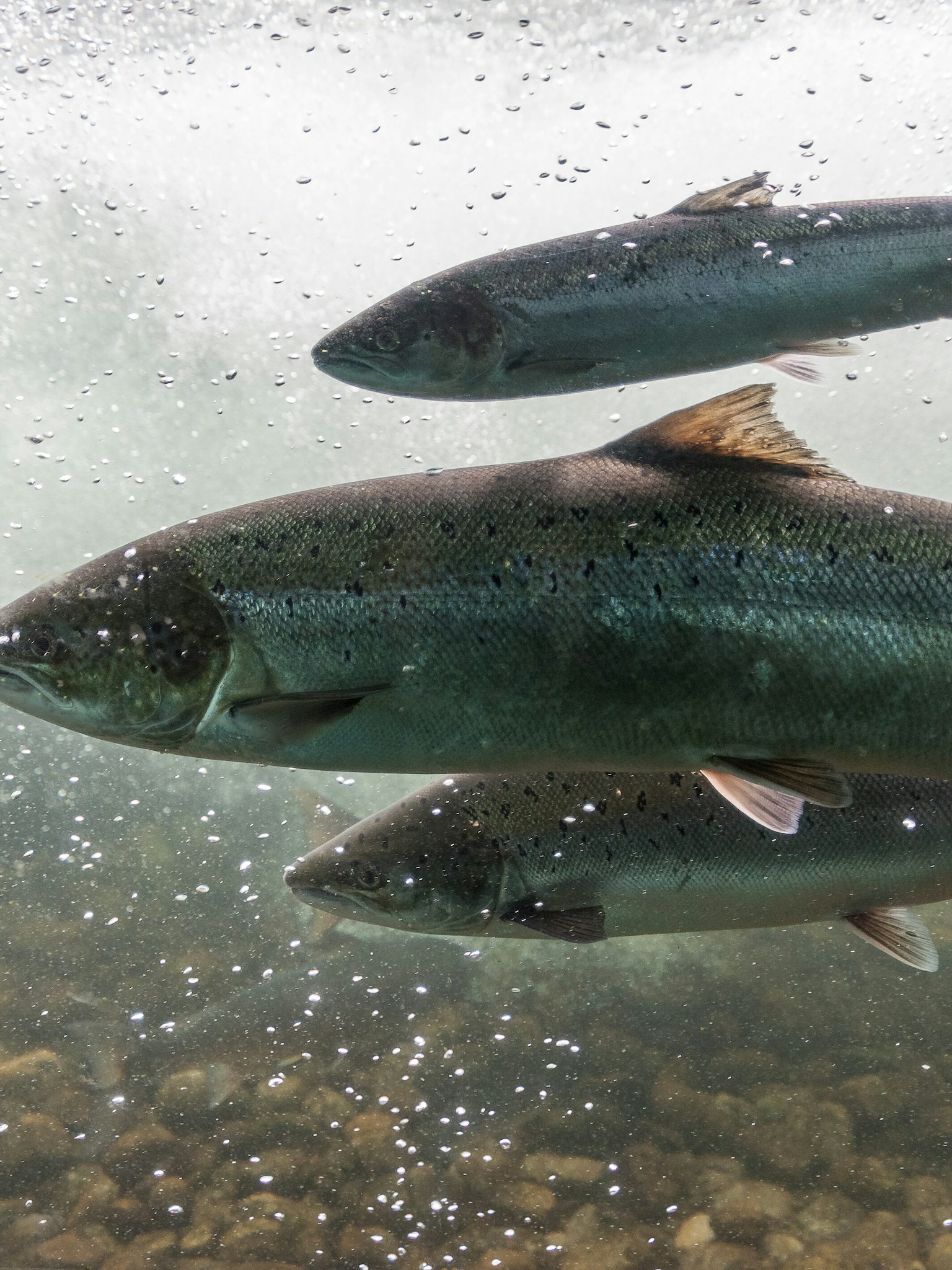
Did you know?
Atlantic salmon can dive over 900 metres, allowing them to prey on deep sea creatures.
Where it likes to be
This endangered fish inhabits the northern hemisphere’s cold rivers and the North Atlantic ocean. In Britain, they are found in rivers across Wales, Scotland, and north and southwest England [4].
From late autumn to early spring, Atlantic salmon embark on an epic migration from the ocean back to the rivers where they were born to lay eggs in gravelly riverbeds. Juvenile salmon, called fry, start their lives in freshwater, where they will develop for a few years before travelling to the ocean as smolts. There, they mature into adults and eventually return to their natal river to spawn.
How much space they need
Salmon depend on clean, oxygen-rich rivers with open access to their spawning grounds. Healthy riparian zones – vegetated areas along rivers and streams – are essential for providing shelter and keeping water temperatures cool. Clear, fast-flowing water is also critical to support them during their migration.
Like other migratory species, barriers such as dams can severely limit the ability of salmon to reach their spawning grounds and reproduce successfully.
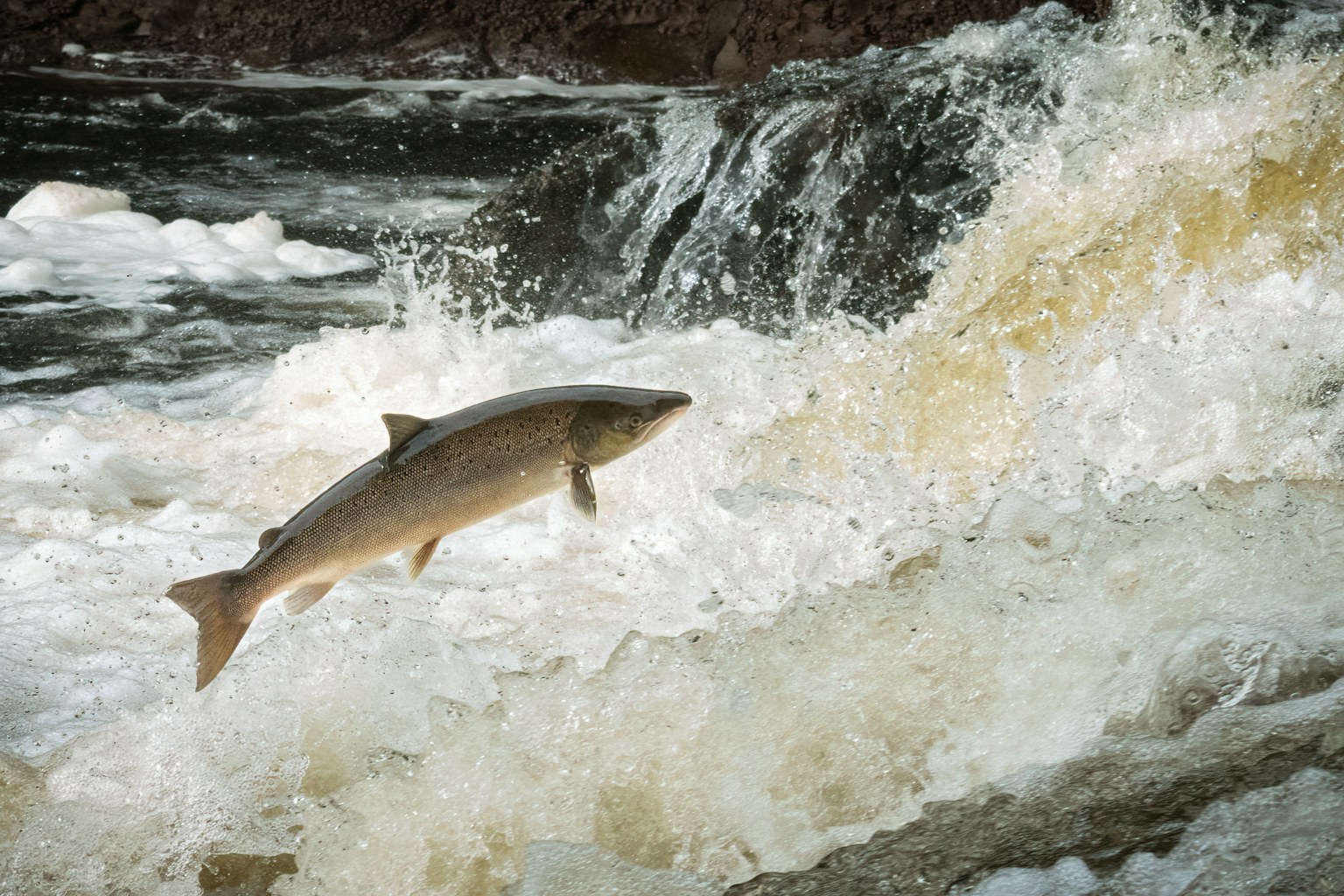
Background story
Native to Britain’s rivers and coasts, Atlantic salmon populations have been important for centuries, both ecologically and culturally. Once abundant across many of Britain’s rivers, their numbers have been in steady decline due to overfishing, habitat degradation, poor water quality, invasive non-native species and dams and other barriers along their migratory routes [5]. Climate change is particularly harmful, as warmer water temperatures reduce their habitat range and impact their spawning success [6].
While still classified as” Least Concern” on a global scale, Atlantic salmon are considered “Endangered” in many river systems across Britain [7].
Can we have them in Britain?
While Atlantic salmon are still present in Britain, their numbers are dropping rapidly. To reverse this decline, rewilding efforts are crucial. Removing barriers can reopen important spawning and feeding grounds.
Improving water quality through sustainable agricultural practices and restoring riparian zones by planting native vegetation along riverbanks can help create the cool, free-flowing and unpolluted waters these fish need to thrive [5]. At sea, they also need sustainable fisheries management to ensure sufficient numbers are returning to spawning grounds to breed.
In summary
- A native, migratory fish that’s endangered in Britain.
- Supports both freshwater and marine ecosystems by promoting nutrient cycling and acting as both predator and prey.
- Act as a great indicator of the health of our river as it needs clean, oxygen-rich rivers and unobstructed access to spawning grounds.
- Populations across Britain are declining due to overfishing, habitat degradation, poor water quality, invasive species, dams and climate change.
- Removing barriers on migration routes is crucial to restoring vital spawning and feeding grounds.
- Atlantic Salmon Trust. (2022). The Salmon Lifecycle - A life of transformation.
- Atlantic Salmon Trust. (2022). Why wild salmon matter.
- NOAA Fisheries. (n.d.). Fun facts about Amazing Atlantic Salmon.
- The Wildlife Trusts. (n.d.). Atlantic salmon.
- The Missing Salmon Alliance (n.d.). IUCN classifies Atlantic salmon in Great Britain as endangered.
- Thorstad, E.B., et al. (2021). Atlantic salmon in a rapidly changing environment—Facing the challenges of reduced marine survival and climate change. Aquatic Conservation Marine and Freshwater Ecosystems, 31(9), 2654–2665.
- IUCN. (2024). IUCN Red List of Threatened Species: Salmo salar.
